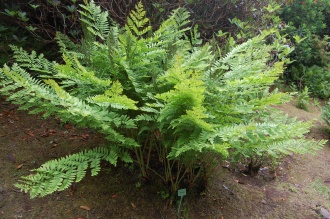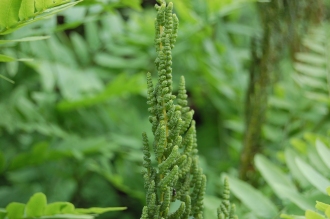Position: Full sun to full shade
Flowering period: Early summer
Soil: Moist to wet
Eventual Height: 2m
Eventual Spread: 2m
Hardiness: 3a, 3b, 4a, 4b, 5a, 5b, 6a, 6b, 7a, 7b, 8a, 8b, 9a, 9b, 10a, 10b
Family: Osmundaceae
Osmunda regalis is a deciduous fern with a clump forming habit. Its mid to light green leaves pinnate and up to 1m long. Its leaves turn red/ brown in autumn. Its brown fertile fronds appear as erect spore bearing pinnae and up to 50cm tall.
Osmunda regalis, commonly known as the Royal Fern or the Flowering Fern, is native to most of Europe (including the UK), parts of north Africa and Asia. In its native habitat it grows in woodland bogs and the banks of streams.
The etymological root of the binomial name Osmunda is possibly derived from Osmunder, the Saxon name for the god Thor. Regalis is from the Latin meaning ‘regal’.
The landscape architect may find Osmunda regalis useful as a large fern with attrative foliage, suitable for full sun to full shade. If grown in full sun it will require plenty of moisture.
Ecologically, Osmunda regalis is of little value to UK wildlife.
The Royal Horticultural Society has given Osmunda regalis their prestigious Award of Garden Merit in 1993.
Osmunda regalis prefers fertile, moist soils. It tolerates most pH of soil. It will tolerate poorly drained soils.
Osmunda regalis requires little maintenance. To keep a tidy appearance its dead leaves may be removed at the end of the winter.







Leave a comment